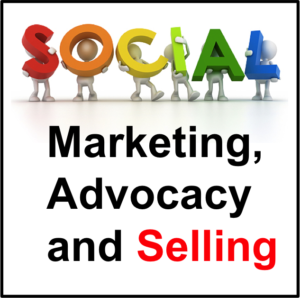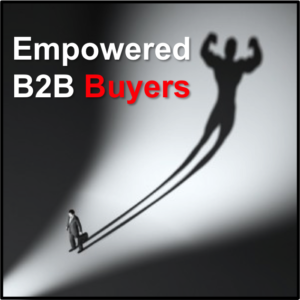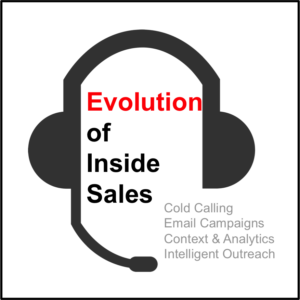
Blog
The Anonymous Buyer Journey – Part 6: Social Marketing, Advocacy and Selling


The sixth and final blog of the anonymous buyer journey dives into the online social landscape that unites peers, shares knowledge and communicates news. While the fifth blog covered the self-directed and self-educated buyer with high expectations seeking consultative advice, we now loop back to the first blog to validate the sales equation in a social environment for marketing, advocacy and selling.
As B2B consultant sellers, in the fourth blog we learned to become high value consultative sellers leveraging empathy and trust to provide intelligent insights with story telling mastery so the transition from digital to human experience for the buyer has no hiccups. Prior to sales engagement, in the second blog we came to understand sales and marketing must shift, working side-by-side to produce concise, contextual and educational content measuring analytics for effectiveness with anonymous buyers.
Therefore, campaigns, messages and sales interactions must be high quality, coordinated and contextual across the buyer’s journey. The third blog informed us of the burden on marketing, inside sales and outbound sales to align on adding value quickly or risk falling out of the engagement cycle with buyers.
There is no social contract for buyers to respond, even more so with spam cannons filling email boxes and hollow voice mails requesting meetings. Buyers have become anonymous for 70-80% of the buying cycle as marketing and sales is not adding value, educating or providing consultative advice and they have many other options to learn what they desire.
Need some proof? Recent sales research notes 18 or more phone calls are now required to reach a prospect and call back rates are below 1 percent. Another study shows more than 90 percent of executives do not respond to unsolicited calls or emails. Even when engaged with sales, only one email in four from outbound sales is opened. So the playing field of casting a wide net for sales must change, even more so when entering social environments. Let’s break down the social environment into the following three pillars:
Social Marketing – establishes company brand and value while driving early engagement with anonymous buyers. Think intelligent outreach with informative and educational content, such as research reports, project success profiles, how-to guides, and lessons learned – alongside the usual company profile items including news, awards and thought leadership. What sources of knowledge are going to help anonymous buyers self educate early on and why would they trust these resources? This loops back to your sales equation solving a known problem with proven results from a growing base of customers.
Social Advocacy – is very powerful, as peers trust each other for advice and insights for the “real story” behind the curtain of smooth vendor marketing and messages. Industry specific (i.e. Financial Services, Healthcare, Legal, Manufacturing) and title-based (i.e. CIO, CSO, CISO, Information Security, Auditors) peer groups have developed in social environments and often have event meetings on a regular basis to share knowledge in person. There are also numerous customer awards and presentation opportunities to highlight project successes, thought leadership and new innovations. Your customer successes well beyond each sale power your brand for social advocacy.
Social Selling – becomes more refined and focused on buyers that fit your solution profile specific to industry, job title and key projects and initiatives. Social online environments provide key information about buyers that you should know and understand before engagement. Solution expertise and knowledge of the customer is required to provide consultative advice when sales teams engage with educated anonymous buyers. There is no excuse for not providing customized insights. Remember, selling is moving to intelligent engagement for high value solutions where the rest of the pack commoditizes to transactional sales likely moving to self-service.
More has changed in sales and marketing over the last three years than over the past two decades. Both the seller and the buyer have new profiles, engagement and expectations for sales success. Change is not easy, as humans we are creatures of habit, and we often repeat processes even with decreasing effectiveness (to our demise). We know the disruptor personal profile often has the most sales success; however, now the disruptor has to operate in a social environment and be patient for buyer engagement.
Buyers are rational; they want to know what is unique about your solution and what results are provided. Visit your own website. In less than one minute can your find the unique value, expected results, or better yet, proven results? If you wanted to learn about your solution or service space, what educational content and advice can be found online and in social environments? If you wanted to engage with a customer peer about your solution or service space, could you find this peer in a social environment? Put the customer in the center and think outwards knowing social environments have become a rich educational space for both the seller and buyer.
Thanks for reading. We hope these six blogs have brought new light to your sales and marketing initiatives. We are here as trusted peers to expand on this advice and customize it for your environment and success. Let us know when the time is right.
Recent Posts


